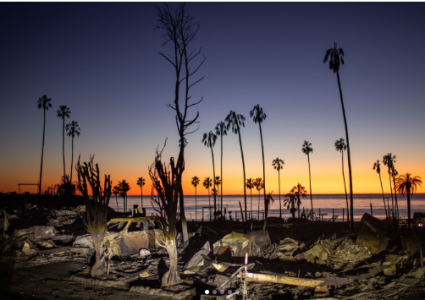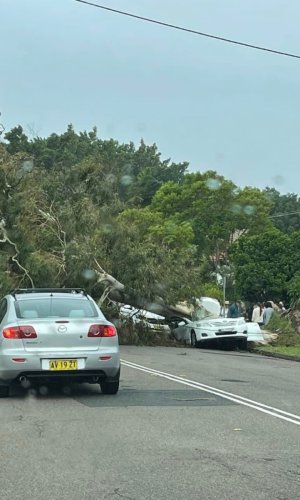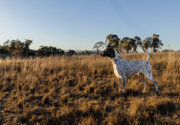‘We cannot win over nature’: Is Australia’s iconic tree fueling California’s wildfires?
By
Maan
- Replies 27
Eucalyptus trees have long been a familiar sight in California, their towering presence now associated with the iconic streets of Los Angeles and San Francisco.
But recent fires have sparked a debate: Could these Australian imports be more dangerous than anyone realised?
As wildfires continue to ravage the state, experts weigh in on whether the beloved trees are to blame or if other factors are at play.
Eucalyptus trees, native to Australia, arrived in California during the Gold Rush of the early 1850s, brought in as tiny seeds in envelopes.

The economic boom led to a wood shortage, prompting Australians to plant eucalyptus in large numbers, seen as a quick solution.
Greg Moore, a tree ecologist at the University of Melbourne, shared with news.com.au that opportunistic Aussies imported and planted the trees widely.
Thriving in California, where there were no natural pests or diseases, the trees soon revealed they weren’t suitable for producing quality timber.
One investor, who planted eight million eucalyptus trees, abandoned his investment when he realised he couldn’t sell the timber.
The Tasmanian blue gum, now widely associated with the streets of Los Angeles and San Francisco, has led many locals to believe it’s native to the area.
However, the eucalyptus tree is now caught up in a heated debate about whether it is partially responsible for the devastating bushfires affecting Los Angeles.
The theory stems from the fact that blue gums, with their toxic, oil-rich leaves and shedding strands of ribbon-like bark, are highly flammable.
Online trolls mocked Americans for planting highly flammable trees, failing to consider the risks, but experts maintain California’s bigger issues outweigh the eucalyptus debate.
Despite the controversy, experts have called claims about the eucalyptus trees causing the fires pure speculation.
Last week’s fires destroyed 40,000 acres of land in California, from Pacific Palisades to Malibu, and took authorities by surprise.
David Acuña, an information officer with Cal Fire, mentioned that the term ‘fire season’ no longer applies, given that fires have become a year-round threat.
David Bowman, a University of Tasmania professor of pyrogeography, stated the fire was a bigger story about climate change and unstable climates.
While it’s possible eucalyptus trees contributed to the spread of the fire, Moore said it’s too early to draw conclusions without solid evidence.
Dr Moore explained that eucalyptus trees are known to produce volatile oils, which concentrate in hot weather, increasing the fire risk.
‘They are quite impressive when they’re part of a fire,’ he said, noting how eucalyptus trees can cause devastation, referencing the 1991 Oakland blaze.
Dean Nicolle, an expert in eucalyptus trees, downplayed the role of eucalyptus trees in the fire, attributing the spread to winter drought and extreme winds.
He explained that the high winds caused embers to travel far, and anything flammable, from vegetation to buildings, would catch fire.
Stephanie Pincetl, head of the California Centre for Sustainable Communities at the University of California, dismissed eucalyptus as a significant factor in the fires.
Pincetl stated that while eucalyptus trees are flammable, they were a trivial concern in the context of the fire.
She blamed suburban sprawl, pointing to recent fires in California that occurred where woodlands meet urban areas.
‘We’re still thinking that as humans, we can overpower nature. We’re not that powerful,’ Pincetl shared.
‘We cannot win over nature,’ she added, urging people to reconsider the role of urban development in fire risk.
In a live report after the fires spread through LA, NBC’s Jacob Soboroff pointed out rows of burned eucalyptus and palm trees.
‘This was really a tinderbox ready to go because of how little rain we’ve got,’ Soboroff said, observing the fire’s intensity.
‘When these things go up, it’s like a matchstick,’ he noted while lamenting the loss of the beautiful eucalyptus trees in his neighbourhood.
Chris Druckman, a 60-year-old softball coach from Pacific Palisades, saw the eerie change in weather as the fire spread, recalling bushfire conditions from her native Australia.
She said the gum trees around them were ‘turning into widow makers’ and urged her friend to leave.

With so many factors at play, one thing remains certain—nature’s power is impossible to ignore. What do you think is the biggest contributor to the devastation?
Share your thoughts in the comments below!
But recent fires have sparked a debate: Could these Australian imports be more dangerous than anyone realised?
As wildfires continue to ravage the state, experts weigh in on whether the beloved trees are to blame or if other factors are at play.
Eucalyptus trees, native to Australia, arrived in California during the Gold Rush of the early 1850s, brought in as tiny seeds in envelopes.

How eucalyptus trees found their place in California’s fire risk. Image source: Instagram/ethanswopephoto
The economic boom led to a wood shortage, prompting Australians to plant eucalyptus in large numbers, seen as a quick solution.
Greg Moore, a tree ecologist at the University of Melbourne, shared with news.com.au that opportunistic Aussies imported and planted the trees widely.
Thriving in California, where there were no natural pests or diseases, the trees soon revealed they weren’t suitable for producing quality timber.
One investor, who planted eight million eucalyptus trees, abandoned his investment when he realised he couldn’t sell the timber.
The Tasmanian blue gum, now widely associated with the streets of Los Angeles and San Francisco, has led many locals to believe it’s native to the area.
However, the eucalyptus tree is now caught up in a heated debate about whether it is partially responsible for the devastating bushfires affecting Los Angeles.
The theory stems from the fact that blue gums, with their toxic, oil-rich leaves and shedding strands of ribbon-like bark, are highly flammable.
Online trolls mocked Americans for planting highly flammable trees, failing to consider the risks, but experts maintain California’s bigger issues outweigh the eucalyptus debate.
Despite the controversy, experts have called claims about the eucalyptus trees causing the fires pure speculation.
Last week’s fires destroyed 40,000 acres of land in California, from Pacific Palisades to Malibu, and took authorities by surprise.
David Acuña, an information officer with Cal Fire, mentioned that the term ‘fire season’ no longer applies, given that fires have become a year-round threat.
David Bowman, a University of Tasmania professor of pyrogeography, stated the fire was a bigger story about climate change and unstable climates.
While it’s possible eucalyptus trees contributed to the spread of the fire, Moore said it’s too early to draw conclusions without solid evidence.
Dr Moore explained that eucalyptus trees are known to produce volatile oils, which concentrate in hot weather, increasing the fire risk.
‘They are quite impressive when they’re part of a fire,’ he said, noting how eucalyptus trees can cause devastation, referencing the 1991 Oakland blaze.
Dean Nicolle, an expert in eucalyptus trees, downplayed the role of eucalyptus trees in the fire, attributing the spread to winter drought and extreme winds.
He explained that the high winds caused embers to travel far, and anything flammable, from vegetation to buildings, would catch fire.
Stephanie Pincetl, head of the California Centre for Sustainable Communities at the University of California, dismissed eucalyptus as a significant factor in the fires.
Pincetl stated that while eucalyptus trees are flammable, they were a trivial concern in the context of the fire.
She blamed suburban sprawl, pointing to recent fires in California that occurred where woodlands meet urban areas.
‘We’re still thinking that as humans, we can overpower nature. We’re not that powerful,’ Pincetl shared.
‘We cannot win over nature,’ she added, urging people to reconsider the role of urban development in fire risk.
In a live report after the fires spread through LA, NBC’s Jacob Soboroff pointed out rows of burned eucalyptus and palm trees.
‘This was really a tinderbox ready to go because of how little rain we’ve got,’ Soboroff said, observing the fire’s intensity.
‘When these things go up, it’s like a matchstick,’ he noted while lamenting the loss of the beautiful eucalyptus trees in his neighbourhood.
Chris Druckman, a 60-year-old softball coach from Pacific Palisades, saw the eerie change in weather as the fire spread, recalling bushfire conditions from her native Australia.
She said the gum trees around them were ‘turning into widow makers’ and urged her friend to leave.
Key Takeaways
- Eucalyptus trees, native to Australia, were introduced to California during the Gold Rush in the 1850s to address a wood shortage.
- While the trees thrived in California, they were not suitable for producing timber, and many investors abandoned their eucalyptus plantations.
- The highly flammable nature of eucalyptus trees has sparked speculation about their role in spreading recent wildfires in Los Angeles, though experts caution that the cause is more complex.
- Experts argue that climate change, extreme weather, and urban sprawl are far more significant contributors to the spread of the fires than eucalyptus trees alone.
With so many factors at play, one thing remains certain—nature’s power is impossible to ignore. What do you think is the biggest contributor to the devastation?
Share your thoughts in the comments below!








